|
|
 Jen Jen |
|
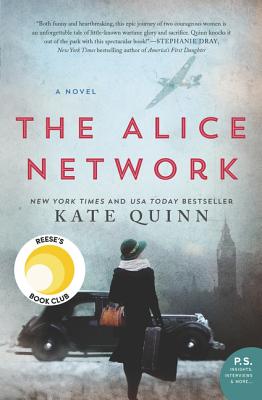
|
 |
The Alice Network
Kate Quinn
I’ve been listening to The Alice Network on libro.fm. My mom read this a while ago and was crazy about it, and I keep hearing customers talk about how much they love it, so even though Sally and I often intentionally do not read the same books, I didn’t want to miss out!
The Alice Network is a novel that follows two women—Eve in 1915 and Charlie (and Eve) in 1947. In 1915, young Eve is recruited to work as a spy in the Alice Network. Thirty-two years later, Charlie is pregnant and unmarried. When her parents send her to Europe to take care of the problem, Charlie decides to search for her beloved cousin Rose, lost in the shuffle of the Nazi years. Along the way, Charlie meets Eve, now a hard, bitter, often drunk older woman. I’m loving the characterizations and story! And the novel is based on little-known history; the Alice Network was an actual spy ring made up of women during World War I. Wow!
|
| |
|
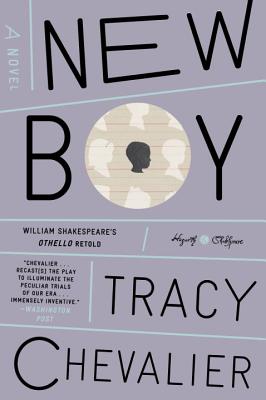
|
|
New Boy
Tracy Chevalier
New Boy, a part of the Hogarth Shakespeare series, is a re-telling of Othello. This short, fast read is a great “modern” re-telling. I say “modern” because it’s set in the 1970s, but compared to Shakespeare’s time, that’s fairly recent. In New Boy, Osei is the new (and black) boy at school. He quickly becomes friends with Dee, a popular and pretty girl. Other students, in particular a bully named Ian, just as quickly become intent on breaking up the new friendship between Osei and Dee. I’m reminded again how some scenarios are played out over and over in history. |
| |
|
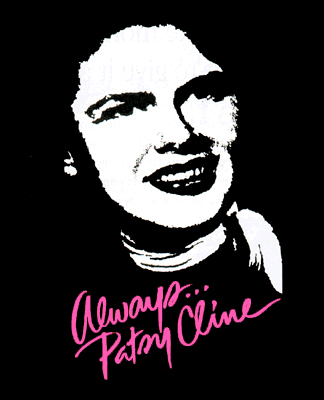
|
|
Always… Patsy Cline
Ted Swindley
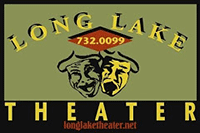
Mostly I’m reading the script for Always… Patsy Cline. This is a musical is based on a true story about Cline's friendship with a fan from Houston named Louise Seger. Seger befriended Cline in a Texas honky-tonk in l961, and continued a correspondence with her until Cline’s death. Always, Patsy Cline will be running at the Long Lake Theater July 13 to 29.
|
|
|
|
|
|
|
|
|
 |
|
|
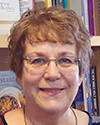 Sally Sally |
|
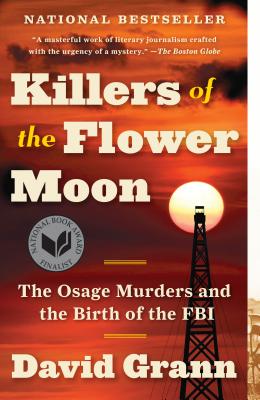
|
|
Killers of the Flower Moon
David Grann
I’m listening to this work of non-fiction on libro.fm, and it’s a difficult story to hear.
The Osage, like other Native Americans, were treated with treachery and a lack of integrity by the government of the United States. They were forced off their land and re-located to an area of Oklahoma where the land was considered worthless. However, the Osage held the mineral rights to their property. When oil was discovered beneath it in the 1920s, the Osage were considered to be the richest people per capita in the world.
The government acted with paternalism, appointing guardians for full-blooded members of the tribe under the assumption they were unable to take responsibility for their affairs.
And then, a series of murders of Osage and their supporters began. In all, 24 people were shot, poisoned, bombed, or thrown off moving trains.
At the time, law enforcement in the United States was in its infancy. Local sheriffs lacked the skills, authority, and interest to investigate the murders. Accounts of what happened at crime scenes is appalling. Also appalling is the prejudice toward the Osage and indifference to their murders. Eventually the agency which was to become the FBI became involved in investigating the murders.
Grann follows the family of Mollie Burkhart, putting a face on victims of the murders.
The book is an important and sobering read, particularly instructive in this time of our nation’s life.
|
| |
|

|
|
Prediabetes: A Complete Guide: Your Lifestyle Reset to Stop Prediabetes and Other Chronic Illnesses
Jill Weisenberger
Weisenberger quotes studies from the CDC (Centers for Disease Control) suggesting that nearly 1 in 3 adults have either prediabetes or diabetes. Even worse, 90% of people with prediabetes don’t know they have it.
This is alarming, but Weisenberg looks at the flipside of learning you have prediabetes, seeing the diagnosis as an opportunity to “reset,” and improve your health.
The book has dozens of concrete steps to take to reduce the risk of type 2 diabetes and other chronic illnesses. It’s written clearly in easy-to-understand language, and allows readers to individualize their own resets.
The strategies she presents include healthy eating, regular exercise, reducing excessive sitting, weight loss if necessary, getting to bed on time, and avoiding tobacco, as well as recognizing that some people will benefit from medication. |
| |
|
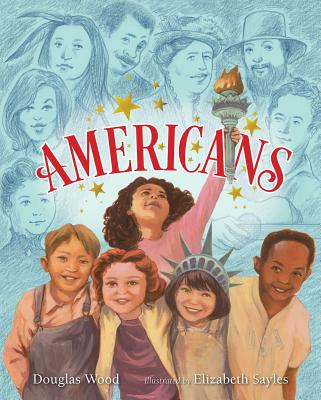 |
|
Americans
Doug Wood
Doug Wood was at our Author Fest in June with his newest book Americans, which he read to us. (Author Fest was June 16 and the book didn’t go on sale until June 19. We’re grateful to Simon & Schuster for sending It early for the event.) The book is a celebration of both the diversity of Americans and the “ways of doing and being that hold us all together.” Although there is great irony in such a book at this time in our history, it also reminds us of the potential for greatness in our country and its people.
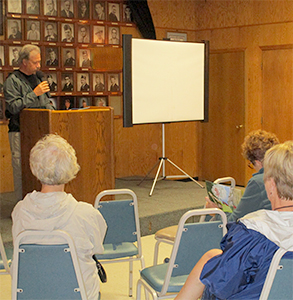 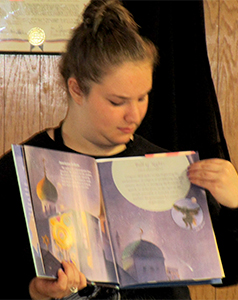
Doug Wood read Americans at Author Fest while Megan turned pages for him.
|
|
|
|
|
|
|
| |
|
|
|
|

Ann
|
|
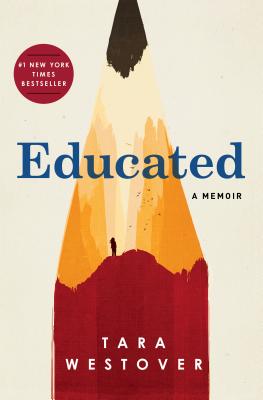 |
|
Educated
Tara Westover
Tara Westover's memoir describes a childhood of isolation and paranoia. Westover was raised by survivalist parents in the mountains of Idaho. She had no contact with the medical world and did not attend school. In fact, she had very little contact with anyone outside of her family.
There was no one to defend her from the violence and abuse that were part of her childhood. Her perceptions of the world were formed exclusively through the lens of her parents' beliefs. Much of the family's energy was focused on making a basic living and preparing to defend themselves against their perceived threat from the government.
Due to a variety of influences, Tara made the decision to seek an education, thereby gaining greater control over her own life. She met challenges of all kinds in her quest to succeed in school and society. Ultimately, Tara Westover credits education with the transformation of her life. I cannot discount the part that her tenacity and resilience play in that transformation. Westover's story increased my awareness of the difficulties faced by children living in the society's margins. I especially recommend Educated to readers who liked The Glass Castle by Jeannette Walls and Hillbilly Elegy by J.D. Vance. |
| |
|
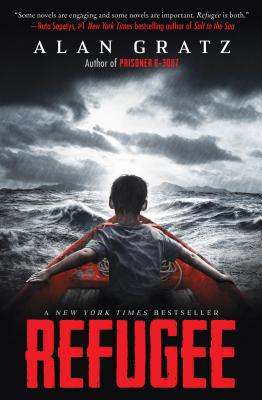
|
|
Refugee
Alan Gratz
Refugee tells the story of three children. Josef is a Jewish boy living in the 1930s. He is on a ship with his family heading across the ocean to escape Nazi Germany. Isabel's story is set in 1994. She and her family set out on a raft from Cuba in hopes of finding a better life in America. Mahmoud is a Syrian boy escaping Syria with his family in 2015, trekking across Europe in search of a better life.
Though the times and places are different, the three stories share many similarities. In each case, the families are faced with leaving their homes and losing loved ones. The dangers and harsh conditions faced by each family are described in a way that is honest and realistic. In each of these cases the goal is to escape. While the great difficulties are not downplayed, hope and courage are also evident. Refugee is a fast paced book that will keep the reader's attention while widening his or her understanding of history and current events. It is historical fiction at its best. |
| |
|
|
|
|
|
| |
|
|
|
|

Bob |
|
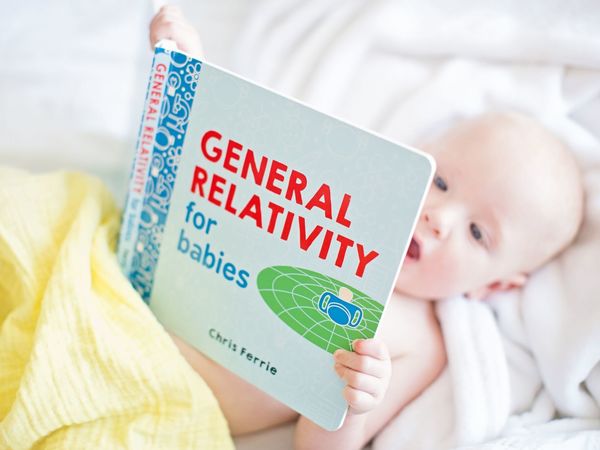 |
|
A series, Science for Babies, Chris Ferris
OK, maybe I’ve hit an all-time low, reviewing books for book people that can’t even read. But these books come with a reader…you! The idea is excellent and Chris Ferris, physicist and father of four kids, has written a series of five “Science for Babies” books (titles below) and a book called ABC’s of Science. You know you just can’t start them early enough, and if you think this is too early, remember the last time a five year old child or grandchild solved a cell phone or computer problem for you…..’nuf said.
These are board books, so they all have heavy duty (i.e. chewable) pages. Kids can teethe and learn at the same time! Each book starts with a simple, familiar concept. For example: This is a ball. Good, common territory. Now nobody is going to get a degree from reading these books but you’ll have an answer when that little girl or guy comes up with the inevitable question, “What’s Quantum Physics, Mom?” Oh yeah, like you knew already! Below are the titles and a quick synopsis of each book.
|
| |
|
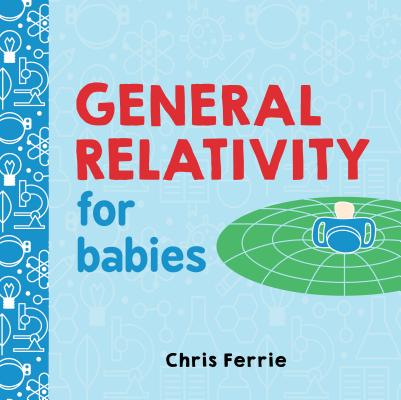 |
|
General Relativity for Babies
About mass, space, and their interactions. Introduces “black holes.” Comes with a real nice space grid. |
 |
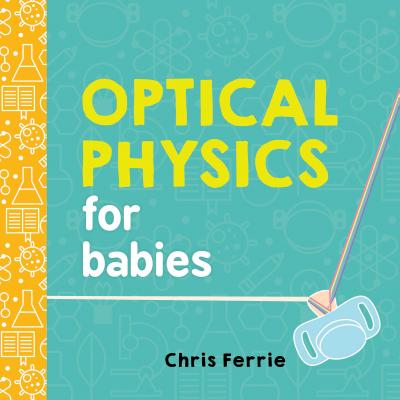 |
 |
Optical Physics for Babies
A good primer on light and how it interacts with objects. Covers absorbing certain wavelengths of light and reflectivity. Explains rainbows. |
| |
|
 |
|
Quantum Physics for Babies
Electrons in elements and/or molecules. Demonstrates adding/radiating energy. |
|
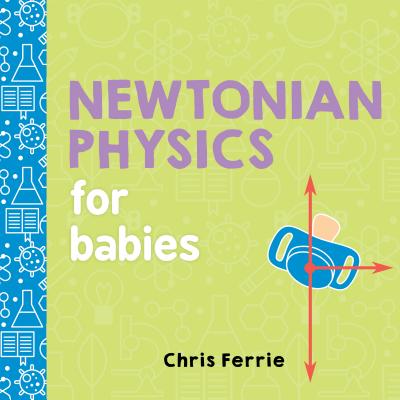 |
|
Newtonian Physics for Babies
Newton’s first three laws of motion. Works with gravity, acceleration and mass. Includes a sketch of Sir Isaac Newton and an apple, in case you are asked why it’s Newtonian Physics.
|
| |
|
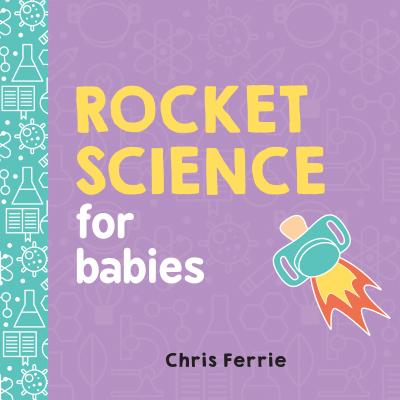 |
|
Rocket Science for Babies
The effects of different-shaped objects passing through air. The difference between spheres and airfoils (airplane wings) in air and then, of course, a demonstration of rocket ships. This book was my personal favorite! |
|
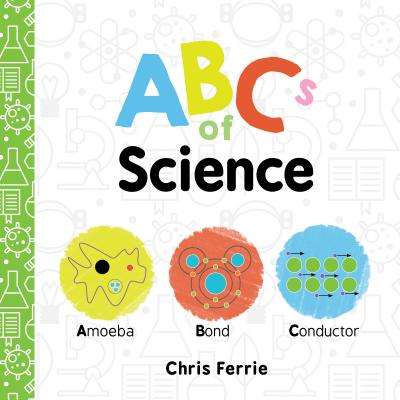 |
|
ABC’s of Science
Goes through each letter of the alphabet and describes a scientific term. Not all the terms are from Physics. There’s a nice mix of areas, including Chemistry and Biology. Each letter is broken up into three sections of information depending on the age of the readee, so as you reread the book you can move up in learning levels/ages. |
| |
|
|
|
|
|

Gail |
|
 |
|
|
| |
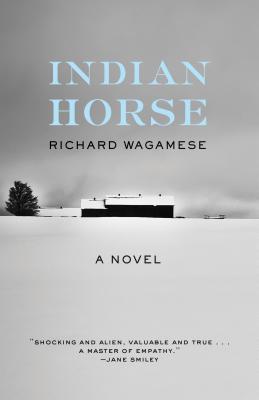
|
|
Indian Horse
Richard Wagamese
Saul Indian Horse is the narrator of this heart wrenching story. He loses his family in the Canadian wilderness and is suddenly faced with the white man's word via a government school and then the rough and tumble sport of hockey. I wasn't sure I even wanted to start this book but am so glad I did. The writing describes place, time, and feelings so very well that one seems to fly through the story. Saul does, after many struggles, find his place and a vision for the future. Wagamese was a Canadian writer whose books are just becoming available in the United States, and that is a plus for us.
|
| |
|
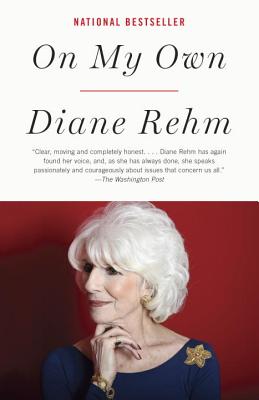
|
|
On My Own
Diane Rehm
An NPR radio host for over 35 years, Diane Rehm is a favorite of many. In this book, she talks about the death of her husband of 54 years and her struggle to continue her life without him. He had Parkinson's Disease and made the decision to refuse all food, meds, and drink to end his own life. Diane is now an advocate for increased conversation about end of life care and right to die in one's own time. |
| |
|

|
|
My Name is Resolute
Nancy Turner
Resolute and her siblings are captured from their sugar plantation in Jamaica by pirates. They are used to the finest, and it's a shock to suddenly be thrown into the hold of a ship. Eventually they are sold as indentured servants. They are brought to America after being taken by Indians! And this is just the beginning! Unbelievable you might say, but author Turner is a great storyteller. My Words and Sarah's Quilt are two of her books which are favorites of her readers. Save this one for a hot summer day under the air conditioner. Though it's 600 pages long, the time will fly and you'll be sorry when this great tale ends. |
| |
|
|
|
|
|
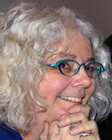
Hannah |
|
 |
|
|
|

|
|
Macbeth
Jo NesbØ
Sort-of-Shakespeare cover of “The Scottish Play”
I love love this book! It’s hands down my favorite in the Hogarth Shakespeare series.
NesbØ doesn’t leave you guessing about the characters: the benevolent Chief Commissioner in the town is Duncan, the head of the SWAT department is Macbeth. He, Banquo, and Duff battle a biker gang in the early pages. Macbeth’s lover, called Lady, owns a casino. NesbØ tells us how and why the weird sisters make their early predictions. But is it as simple as it appears? Lady is more ambitious than Macbeth, seeing the possibilities in his attain power, to use for the good of the town of course.
There are some plot twists and surprises to keep you full of suspense. The book is so compelling that I’m sure it will delight even readers who don’t know the play, but I was lucky enough to see Macbeth a week before I read NesbØ’s version. I recommend that you watch a video if you can, or at least read a summary to remind yourself about the original play. Seeing how NesbØ plays with the content adds to the deliciousness of this read. |
| |
|

|
|
The Gap of Time
Jeanette Winterson
Sort-of-Shakespeare cover of The Winter’s Tale
The Winter’s Tale has a special place in my heart because I saw it performed when I was grieving for my mother, and didn’t know about the climax where the young woman’s mother comes back to life. This is a fine, readable book. It brings the themes of the play into contemporary scenes (like a financers office and a jazz club) and makes it easy to relate to the characters (such as a video game creator and an used auto salesman) and their motivations. I wish she’d done a bit more with the climax, but I’m more attached to that scene than most readers would be.
|
| |
|
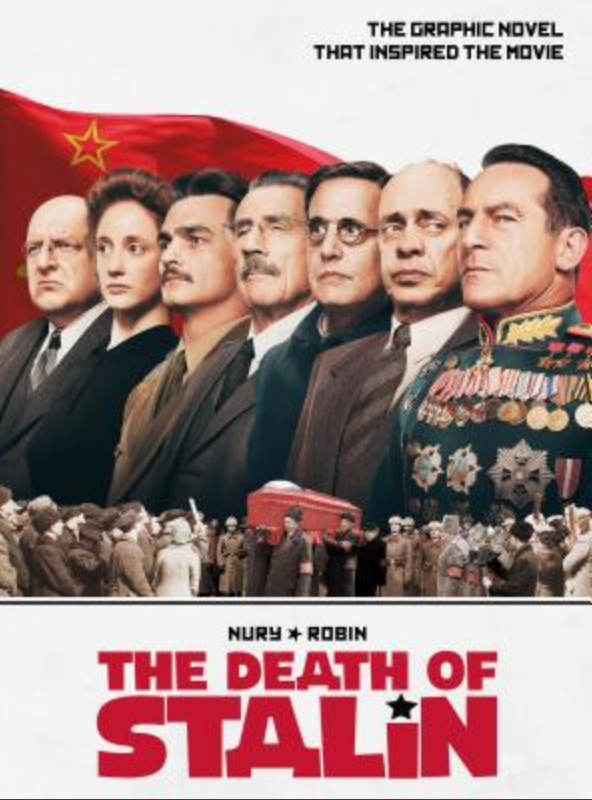
|
|
The Death of Stalin
Fabien Nury, Illustrated by Thierry Robin
I recently saw the strange and fascinating movie The Death of Stalin. I noticed in the closing credits that the film is based on a comic book, or graphic novel, and I had to check it out. 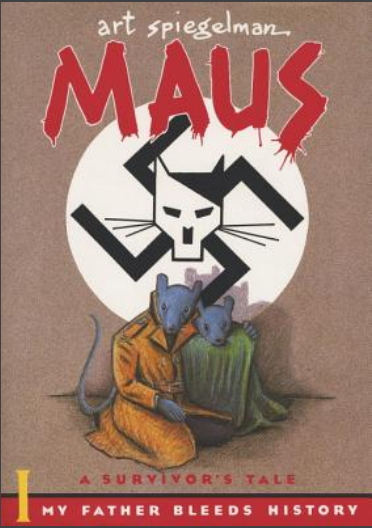 Nury says in an introduction that while the details are fantasized, the truth about Stalin's last days and funeral are just as crazy. Maus, Art Spiegelman's graphic novel about the Holocast, demonstrated that a serious and traumatic subject can be effectively communicated in this format. The Death of Stalinadds comedy, but is still thought provoking. Nury says in an introduction that while the details are fantasized, the truth about Stalin's last days and funeral are just as crazy. Maus, Art Spiegelman's graphic novel about the Holocast, demonstrated that a serious and traumatic subject can be effectively communicated in this format. The Death of Stalinadds comedy, but is still thought provoking.
|
| |
|
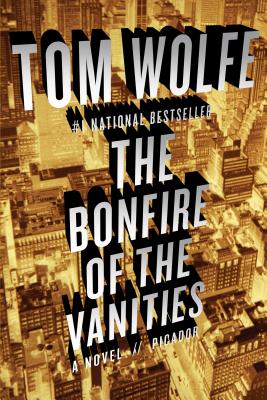
|
|
The Bonfire of the Vanities
Tom Wolfe (In Memorium)
Wolfe was one of the 20th century writers of non-fiction who changed the tone of non-fiction into a sassy fictional style. The Bonfire of the Vanities is a novel that feels like it's as revealing as his non-fiction work such as The Right Stuff. (Both of these books were made into major motion pictures.) Bonfire of the Vanities: it's so well named. Oh, the New York lawyers and politicians! The Masters of the Universe in Wall Street! The black protests and the media frenzy! Sound familiar? It takes place in the late 1980s, before social media and 9/11. So much has changed, and so little. The roots of our current situation are laid out here. |
| |
|
|
|
|
|
| |
|
|
|
|
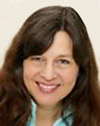
LouAnn
|
|
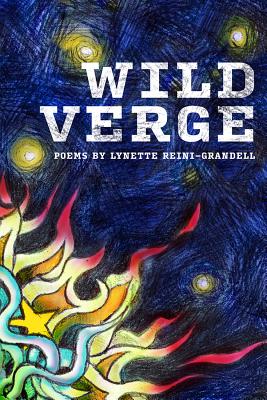 |
|
Wild Verge
Lynette Reini-Grandell
Wild Verge is a northern book, full of bears and blizzards, owls and ice. There's even a Park Rapids connection, obvious once you know about it (her mother was a Konshok.) Reini-Grandell mines her (our) landscape for metaphor, as well as for the just-as-it-is, and shows us a new side of the things that we think are familiar. There is reverence here, and a clear-eyed understanding of the undercurrents. Reini-Grandell invokes the spirits of her Finnish ancestors and of the animals and land forms that residents of (or visitors to) the Park Rapids area will recognize as the same ones that have drawn us here, will recognize the whispers of history and of ancient stones and rivers, mixed into the here-and-now of the death of Sandra Bland, or a transgender spouse confronted at the supermarket. Throughout these poems runs a thread of wonder, of love. Though the title of the poem is "Old Man Bear Song," I think it is Reini-Grandell speaking the lines:
I say these things that you might see them,
I love these things that you might love them.
|
| |
|
|
|
|
|
| |
|
|
|
|

Pam |
|
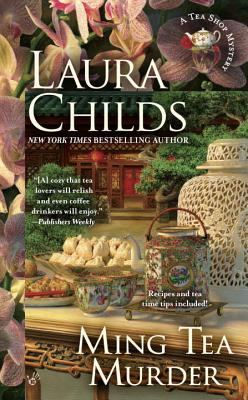 |
|
Ming Tea Murder
Laura Child
Laura Child continues to surprise me with her ability to weave mystery into the historical town of Charleston. Tea shop owner Theodosia is an amateur sleuth with the ability to help authorities solve the latest crimes. In this mystery, a wealthy donor to the art museum is found murdered during the opening night of the newly acquired imported Chinese Tea house. Theodosia works through the mystery of the mistress and the grieving widow. One of my favorite parts of this series is the added information about teas and various recipes. I also enjoy the various characters that Child develops through the series. |
| |
|
|
|
|
|
| |
|
|
|
|

Tim |
|
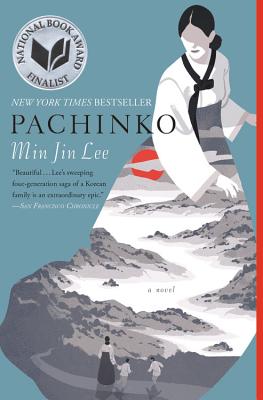 |
|
Pachinko
Jin Min Lee
This is the story of a traditional Korean family that immigrated to Japan just before WW II. It follows their experiences as immigrants in Japan until the 1960’s. What I found interesting was the commonality of their experience with the experiences of present day immigrants. It was interesting, too, to find that Asia is just as resistant to a foreign influx, even while Japanese Immigrants were treated badly as they made their way to the U.S. What is the knee-jerk resistance established communities have to an influx of “other”? It’s perplexing. |
| |
|
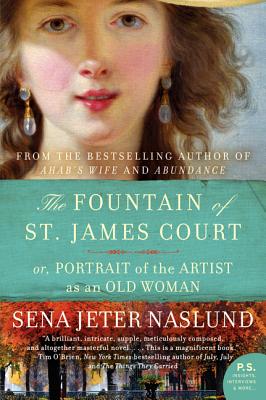
|
|
The Fountain of St. James Court
Sena Jeter Naslund
Last month I’d read some of Sena Jeter Naslund's works. This month I’ve continued, with The Fountain of St. James Court, an interesting double narrative of two women artists. One, a present-day writer, who has just completed a novel, and the second, a fictionalized account of the 18th Century portraitist Elisabeth Vigee-LeBrun, most famous for her portraits Marie Antionette. Both of these women struggle with characters/talent that places them well beyond the circumscribed conventions of what it is to be a woman of their own time. Both must come to terms with constructing meaningful lives for themselves, even as they encounter resistance to both their artistic and personal lives. |
|
|
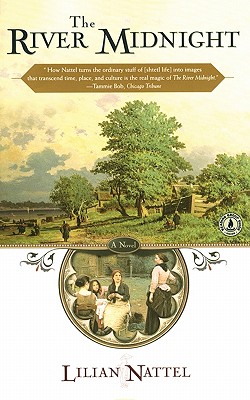
|
|
The River Midnight
Lilian Nattel
This book was a little treasure. It’s the story of four young women and their lives in a rural Polish shtetle (Jewish Village) in 1894. It’s a tight little traditional community, with all the warmth and sweetness as well as the chilling brittleness of village culture. |
Would you like to be a guest reviewer?
Email Sally at sally@beagleandwolf.com |
| |
|
|
|
|
|
— page top —
|
|

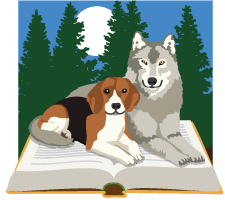

 Jen
Jen


 Sally
Sally

































 Nury says in an introduction that while the details are fantasized, the truth about Stalin's last days and funeral are just as crazy. Maus, Art Spiegelman's graphic novel about the Holocast, demonstrated that a serious and traumatic subject can be effectively communicated in this format. The Death of Stalinadds comedy, but is still thought provoking.
Nury says in an introduction that while the details are fantasized, the truth about Stalin's last days and funeral are just as crazy. Maus, Art Spiegelman's graphic novel about the Holocast, demonstrated that a serious and traumatic subject can be effectively communicated in this format. The Death of Stalinadds comedy, but is still thought provoking. 